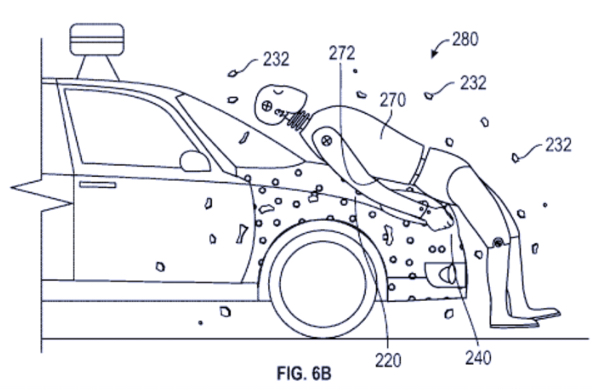Google patents 'sticky bonnet' 24 | 05 | 2016

WE’VE CHECKED THE date, and it’s definitely not April 1. Why did we check? Well, Google has patented the creation of an innovative ‘sticky’ car bonnet: in essence, human flypaper.
Don’t laugh: there is a serious safety element to this. It’s been designed to stop a person from being thrown off the bonnet and on to the road in the event of a collision.
Set to be introduced to Google’s own driverless vehicles which make use of smart technology, the system targets this ‘secondary stage’ of a pedestrian impact, where most fatalities occur, suggesting it could drastically reduce the number of pedestrian deaths if it were to be successfully integrated into vehicles.
The patent, published on the USPTO (United States Patent and Trademark Office), reveals its technical details. It shows that a car’s bonnet is covered in an adhesive layer, finished with an outer shell that can be painted to match the rest of the body.
The outer shell prevents debris from sticking to the adhesive, but in the event of a pedestrian hitting the surface, this outer shell breaks to allow the person to bind to the adhesive below.
Primarily designed for use on driverless vehicles, the technology could have the potential to be adapted for use with other automotive platforms, even possibly — according to some reports — being adapted to cater for collisions with other road hazards including bikes and animals.
Autonomous cars, then sticky bonnets to catch accident victims. Hmmm … there’s clearly a lot of interesting, but strange technological development going on in dark automotive research offices around the world. But is any of it really any good?
Related: Roadtest — Ford Focus RS
Keep up-to-date with all the latest news by following us on twitter.com/Scotcars
Jim McGill